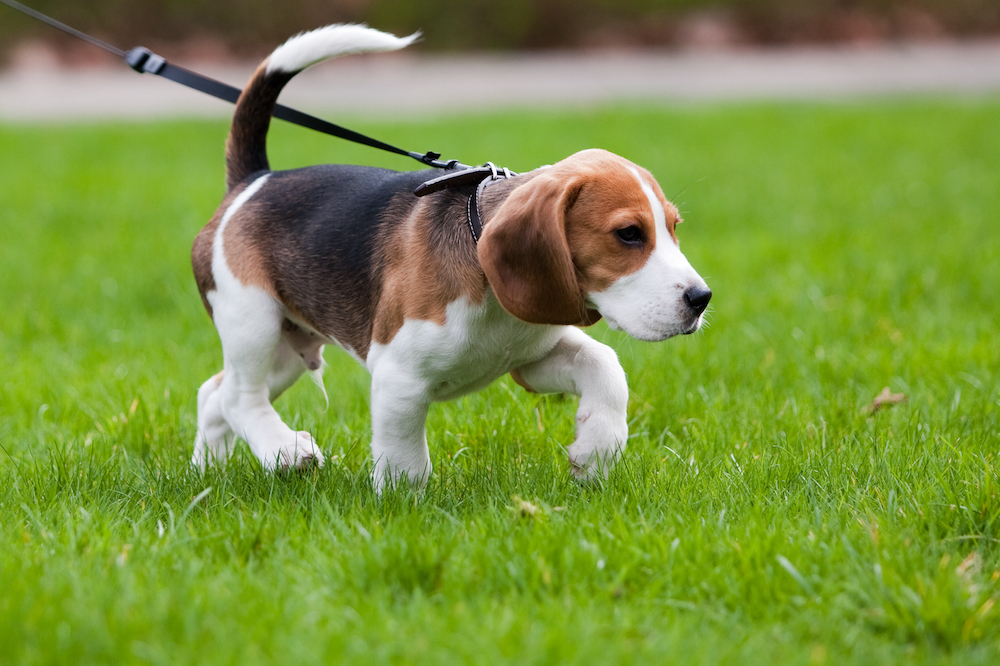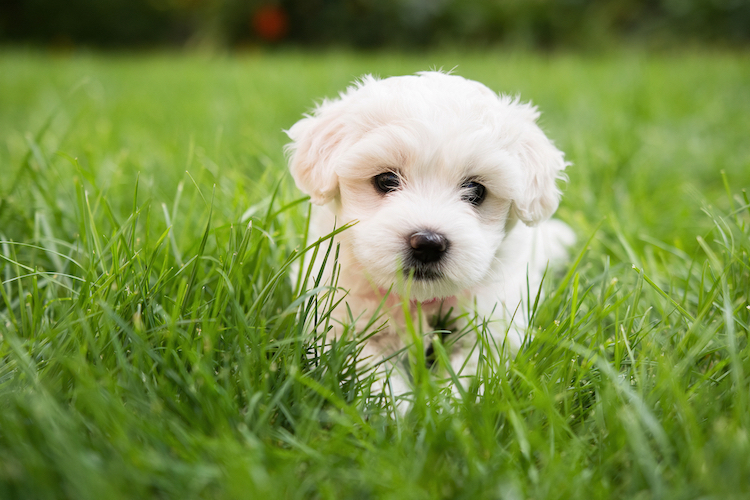So you’re about to realize your dream and bring home a puppy—congratulations! Along with all the fun, play, and snuggles, a puppy also brings a lot of responsibility. Here are 10 of the most important things you need to do to set your adorable, great-smelling little friend up for a happy, healthy life.
Connect with a vet
Your dog’s vet can be a crucial resource for you, and a VIP in your puppy’s life. Ask family and friends for recommendations, as people with personal experience may have insights you won’t find in online reviews.
Ask the vet about their philosophy, fees, and policies, and even visit in person to get a feel for the place and the staff before you pick up your pup. You should feel comfortable with how the vet approaches care and handles your inquiries, because you will need them as a trusted partner in keeping your dog healthy.
Consider the vet’s location, and whether they offer emergency care. (If they don’t, find out about emergency care facilities close by.) Be sure to set up a first appointment as soon as possible, ideally by your pup’s third day with you.
Feed them right
Determining what to feed is one of the most important aspects of puppy care. You’ll need to think about the quality of the food, its nutritional makeup, and the frequency of feeding. Here are some key considerations:
- Growing puppies need more calories, fat, protein, and essential nutrients per pound than older dogs; choose a high-quality food designed for the nutritional needs of puppies
- Healthy fats are important for all facets of a puppy’s health. High-quality fish oil (like that found in The Farmer’s Dog recipes) is a key source of the fatty acid DHA, which is important to brain and eye development in young puppies
- From 6 weeks to 6 months, feed your puppy 3 to 4 times per day. At 6 months, transition to a once- or twice-daily feeding schedule, which you’ll likely stick to for the long haul (note that the guidelines are different for large breeds.)
Weight management is a cornerstone of health, even for puppies. Know the number of calories your pup needs—and be careful to feed them the right amount, adapting as you go. A fresh-food plan makes this process easy, so you’re not guessing or relying on inexact measurements like “scoops”—and it’s easy to adjust your puppy’s portions as they grow (and grow and grow).

Be prepared
Sure, you can get the doggie T-shirt with your college football team’s logo on it—but before you do that, here are some essentials you need to have on hand when you bring your pup home:
- Crate
- Bedding
- Bowls
- Leash and harness or adjustable collar
- Puppy-safe toys (puzzles, chew toys)
- Vet-approved shampoo and brushes
- Poop bags (so. many. poop. bags.)
- Baby gates
- Enzyme spray for accidents
- Dog toothpaste and toothbrush
- ID tags
- Dog food
Crate train—even if you don’t plan to use a crate long-term
About that crate: it’s an important tool for so many aspects of puppy—and dog—life. It can help with potty training (see below), provides a cozy place for your pup to learn to enjoy some alone time, and can serve as a good sleeping spot, among other things. Some important things to consider about crates: A collapsible wire crate is easy to clean and store, and your pup can see you through it for comfort (you can also cover the crate with a blanket to create a cozy den). Your pup should have enough space to sit, lie down and turn around comfortably in the crate, but be sure it isn’t so large that your pup could use part of it as a potty spot.
Cozy up the crate with a blanket or a bed, and teach your pup that it’s a happy place by offering toys and/or treats inside. You can even feed your dog some meals in the crate to make it extra clear that it’s a spot where good things happen. Start with the door open, and let your dog get used to—even fond of—being in there before closing it. You never want time in the crate to feel like a punishment.

Take it (poop) outside
Generally, potty training is nobody’s favorite part of the puppy stage—but with a few key strategies, plus a lot of patience and consistency, your pup will pee and poop outside like a champ. Here are some tips:
- Use your crate: If your puppy knows this is their spot, where they’ll spend a lot of time, they’ll be reluctant to soil it. If your pup doesn’t pee or poop outside on a walk, put them in the crate when you get back, wait 15 minutes, and try again.
- Put them on a schedule: This is helpful not only for potty training, but also for almost everything else. Set times of day when your puppy eats, goes potty, has rest time in the crate, etc. Over time, the intervals between potty breaks will get longer.
Install a verbal cue, and reward: Use one word or short phrase associated with going potty (such as “go potty” or “do your business”). Repeat it and give a reward when your pup goes. This will help them to learn what’s expected of them.

Train them early and often to establish the relationship you want
The crate and potty training are just two pieces of a comprehensive training plan, and a joyful coexistence with your dog will be easiest to achieve if you begin consistently educating your dog right away. Think through what matters most to you, and consider connecting with a qualified trainer to help you achieve your goals. A few things to consider:
- Where your dog will sleep.
- Avoiding bad habits such as jumping and excessive barking
- Whether there are places in the house where you don’t want your dog to go, such as a particular room or piece of furniture, like the couch
- Striking a balance between giving your pup lots of attention and teaching them to be okay playing or hanging out on their own
- Forging a strong bond with your dog, and building their confidence
Remember that you’re more likely to get your puppy to cooperate if you’re clear about what you need, and if following your directions gets the dog results that they want.
Puppies have a well-earned reputation for chewing on everything. Puppies use their mouths to explore the world around them; plus, teething puppies may chew to relieve pain. Give your puppy age- and size-appropriate chews and chew toys, so they focus on those things instead of tearing up your furniture or your favorite shoes
Teach bite inhibition
It’s also important to teach your pup bite inhibition; that is, how to control the strength of their bite so they don’t injure you, other humans, or another dog. When you’re with your pup, if they bite you playfully but it’s too hard, stop playing, and make a sound like a yelp or a loud “ouch!” Don’t yell at your pup, which can scare them. Also, give your pup the opportunity to play with other puppies or dogs; those interactions can help teach your dog to understand and control the power of its jaws.
Start socialization right away (safely)
Teaching your pup how to interact and respond successfully—with other dogs, with people, and to stimuli such as car rides, storms, ringing doorbells, and visits to the vet and the groomer—is one of the keys to having a happy, confident dog. This is socialization, and it can help prevent stress and anxiety that can lead to behavioral and health problems; plus, it can strengthen the bond between you and your pup. Research indicates that the best time to do it is between birth and 16 weeks, when your pup is still cognitively flexible. Go slowly, be patient, and remember that every item, experience and person is new to them. Encouragement, positive reinforcement and treats will help them gain confidence and grow comfortable with each new thing. And because some of a puppy’s socialization takes place before they can be fully vaccinated, you should work with your vet to make a plan that balances their need to learn with protecting them from diseases.

Prevent separation anxiety
Most dogs don’t like to be left alone for long stretches, and some (about 13% to 18% of dogs) suffer from separation anxiety, a serious condition in which a dog becomes highly distressed when left alone. As with most aspects of puppy care, it takes patience and mindfulness to get your pup content with being on its own. A few pointers: Make sure your pup learns to be comfortable with alone time in their crate while you’re home. Leave for short periods at first, like 5 or 10 minutes, and slowly stretch out the intervals.
At the start, the maximum amount of time you can leave your puppy alone will be limited by their bladder. Until they’re 10 weeks old, you can’t be gone more than an hour. After that, they can usually wait to pee for about an hour per month of their age (2 hours for a 2-month-old puppy, 3 hours for a 3-month-old puppy, and so on).
Teach your pup to associate your absence with positive experiences; for example, fill a durable rubber toy with a healthy treat like bone broth or pumpkin and freeze it (make sure both are plain, without seasonings or added ingredients like onions). When you leave, give the toy to your pup; because the treat is frozen, licking it and savoring it will occupy your them. Before you leave, tire out your pup with a walk or some play time so they can relax while you’re gone.
Make exercise a habit
Speaking of walks and play: exercise is tremendously important for dogs’ wellbeing, helping them to maintain a healthy weight, alleviate stress, and more. Puppies love to play, and need to get their energy out—but avoid overdoing it, especially when they’re little and their bones are still growing. That period lasts longer for larger breeds.
Taking your puppy on frequent, short walks for potty training is a good form of exercise when they’re too young for more intense workouts. Combine that with active play, such as fetch or hide and seek (where you hide small treats or toys around the room), and your pup will get plenty of movement as well as mental stimulation.









